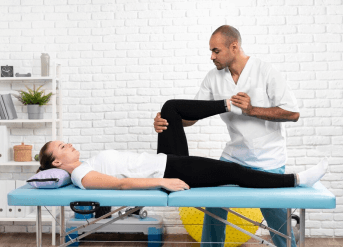In the world of pelvic floor physical therapy, practitioners often delve into the interconnected web of muscles, fascia, and nerves that contribute to pelvic health. While many might not immediately associate the jaw with the pelvic floor, an intriguing link exists between these seemingly disparate regions of the body. This blog post explores the fascinating connection between the jaw and pelvic floor, tracing their development from embryonic stages to their ongoing association through the frontal myofascial line.
Embryonic Development:
During embryonic development, the body undergoes a remarkable process where two distinct parts emerge, each responsible for creating specific openings. One part contributes to the formation of the mouth and related structures, including the jaw. Simultaneously, another part is instrumental in creating the openings for urination, digestion, and reproduction – the region that eventually encompasses the pelvic floor. This dual development underscores the foundational connection between the jaw and pelvic floor, as both originate from shared embryonic tissue.
Frontal Myofascial Line:
One of the key factors in understanding the connection between the jaw and pelvic floor is the frontal myofascial line. This line runs from the jaw down through the front of the body, connecting various muscles and fascial structures. This anatomical link highlights the continuous relationship between the upper and lower parts of the body.
Stress and Pain Response:
Stress and pain trigger automatic responses in the body, often manifesting as tension and tightness. Interestingly, this response is not isolated to one area but can involve simultaneous clenching of both the jaw and pelvic floor muscles. The interconnectedness of these muscles becomes particularly apparent in moments of heightened stress, as the body's natural instinct is to tighten these regions in unison.
Constant Tightness and Clenching:
Individuals experiencing chronic stress or pain may find themselves grappling with persistent tightness or clenching in various areas of the body, including the shoulders, jaw, and pelvic floor. Understanding that these regions are interconnected can provide valuable insights into comprehensive treatment approaches.
Pelvic Floor Physical Therapy:
Surprisingly, pelvic floor physical therapy may involve sessions that specifically target the jaw. Therapists recognize the importance of addressing the body as a whole, considering the interplay between different muscle groups. Techniques such as manual therapy, exercises, and relaxation techniques for the jaw may be incorporated into a holistic pelvic floor treatment plan.
As we continue to unravel the complexities of the human body, the connection between the jaw and pelvic floor emerges as a significant aspect of overall health. Recognizing this link allows for a more comprehensive approach to pelvic floor physical therapy, where practitioners address not only the pelvic region but also interconnected areas like the jaw. By understanding and embracing this intricate dance between the upper and lower parts of the body, individuals can work towards achieving optimal health and well-being.






